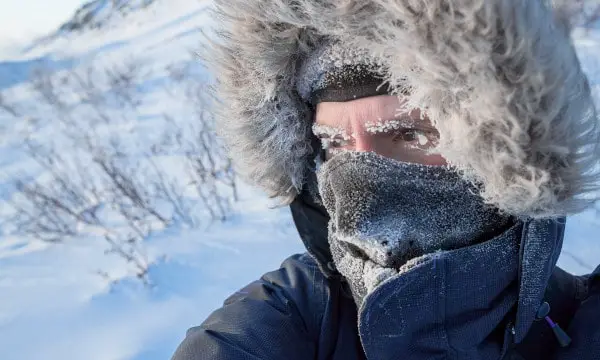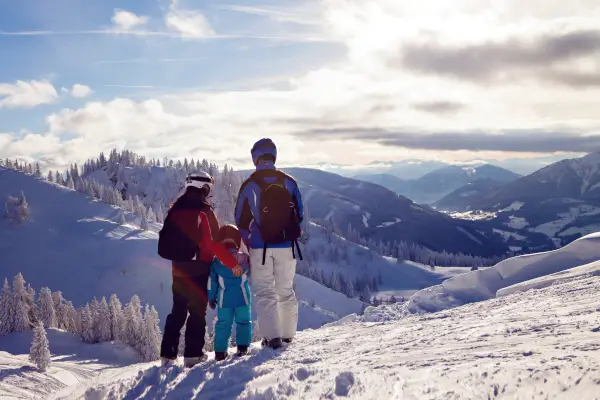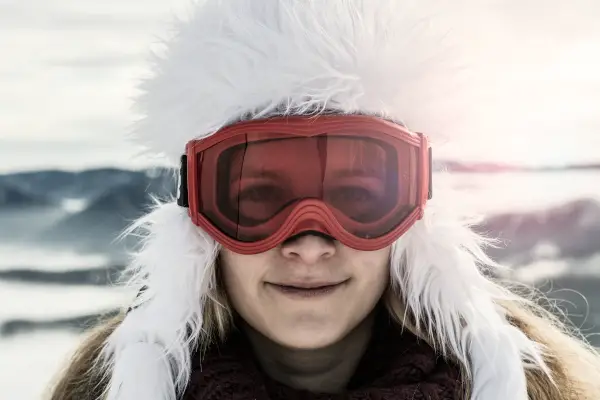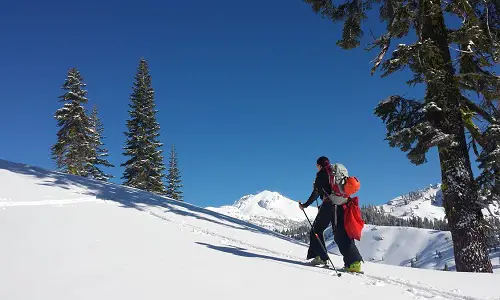Table of Contents
To protect from sunburns, frostbites, and cold, here are some hacks and tips to protect your face and neck when skiing.
How to Keep Your Face Warm while Skiing
1. Wear Balaclava and/or Neck Gaiter
A comfortable, durable, and full coverage balaclava that serves multiple purposes should be used, especially in downhill or alpine skiing. It should be long enough to tuck inside the jacket and can also be used as a neck gaiter will be most suitable for this purpose.
Cross-country skiing involves intense workout which generates body heat. So it doesn’t need an extremely warm balaclava. A thin yet breathable balaclava will work fine for cross-country skiing. If the balaclava is lined with neck fleece, then it will provide maximum warmth.
2. Wear Thermal Hats
You should use thermal hats, helmet liners, and beanies for insulation purposes. Wear them for both cross-country skiing and alpine skiing because heat loss should be prevented. This will let you focus on skiing rather than the cold.
Balaclavas can also serve the purpose of helmet liners. After some research, you should choose the most suitable balaclava according to your need, the type of skiing and the temperatures.

3. Try the AirTrim Cold Air Mask
This mask will be most effective for cross-country skiing as the activity directly exposes you to cold air while skiing intensely. It recovers the moisture and heat from the exhaled air and keeps the air passages warm, protecting from cold. However, it doesn’t protect from pathogens and pollution. It does have several filters, which are discussed below:
- Asthma filter: It has the most warming effect and less airflow. It is helpful for people with asthma and angina who cannot tolerate cold air. It conserves the most heat; hence it protects from hypothermia.
- Sports filter: Sports filters are made for low-intensity training like alpine skiing, which doesn’t involve a lot of workout.
- Racing filter: The racing filters are made for high-intensity training like cross-country skiing. Race 1 filter is the most resistant and provides greater warmth. Race 2 and 3, on the other hand, are less resistant and least warming.
4. Apply Balm on the Face
Skiing, especially cross-country skiing, involves so much effort and intense workout, leaves your skin deprived of moisture, chapped, and burnt. To save your skin from dehydrating, using face balm and lip balm is a necessity.
This non-comedogenic wax-based gel has got you covered, and it provides maximum protection from the sun, wind, and cold. Say goodbye to cracked and chapped lips after skiing and multiply your excitement by having a fresh face and lips. There will be no more dreaded goggle tan after a long day of skiing in the mountains.

5. Use the Anti-Freeze Face Tape
For proper insulation of skin, cyclists, winter runners, snowboarders, alpine, and cross-country skiers can use antifreeze tape. This will provide maximum protection against facial frostbite.
These tapes are available in several colors and protect the vulnerable areas of the face. The tapes are available in pre-cut pieces for the nose, cheeks, and other face parts. You can also use them in other locations like the fingers and toes under socks and gloves.
6. Wear Goggles
You should never forget to wear your goggles when going skiing. Goggles will improve your visibility at high speed and provide maximum protection to your eyes from sunlight and cold. Plus, ski goggles keep your cheeks warm in freezing temperatures. That is why no skiing expedition can start without wearing your goggles.

7. Stay Hydrated!
Balaclavas, neck warmers, balms, goggles, and antifreeze tapes are artificial means of providing warmth to the body when skiing. To keep the body naturally warm and promote heat generation, remember to stay hydrated throughout the expedition. Adequate water and warm fluid intake will enable the skier to do intense sports like cross-country skiing.
A popular option is to have insulated hydration packs on your back. These are convenient for drinking water during a quick stop, while they also allow for some additional storage space.
Closing Thoughts
We have outlined all you need to keep yourself warm and protected in a skiing mission. So don’t forget to go through these tips before preparing your backpack for the next mountaineering adventure.


